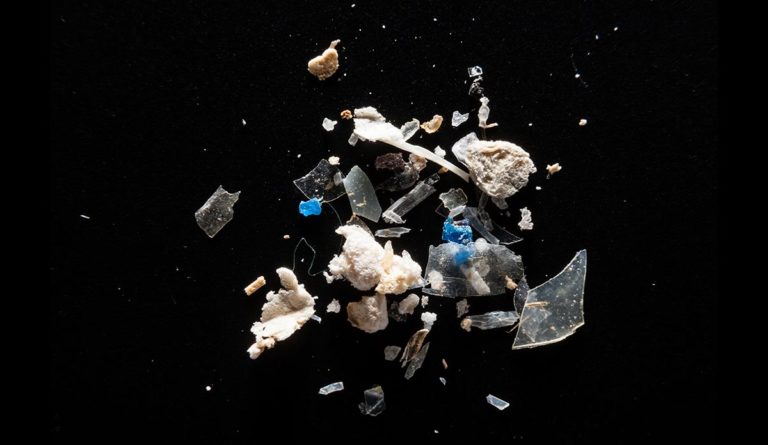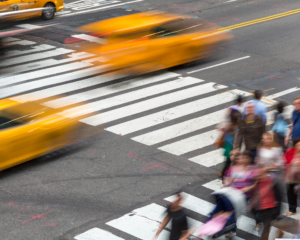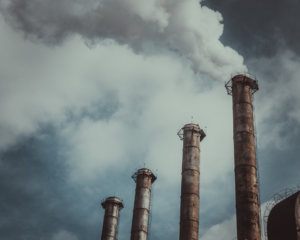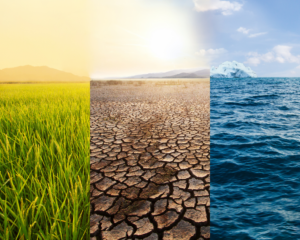The Problems with Plastics
As of 2017, the world has produced 8.3 billion metric tons of plastic. A report by Christopher Rhodes highlights five efforts to reduce plastic waste in our environment.

Read Time: 3 minutes
Published:
As of 2017, the world has produced 8.3 billion metric tons of plastic. That’s more than 52 million blue whales, 1.5 billion African elephants, or 112 billion people. Eighty percent of that plastic has wound up in landfills, in the ocean, in the guts of birds and animals, everywhere in our environment. Less than one tenth of plastic is recycled. In Plastic Pollution and Potential Solutions, Dr. Christopher Rhodes reviewed plastic production, plastic’s impacts on human and ecosystem health, and waste reduction efforts.
Plastics are primarily produced from crude oil, gas, or coal, and forty percent are discarded after a single use. Nearly half of all plastic products are discarded after a single use and take up to 1000 years to disintegrate. Larger items, such as plastic bags and straws, can choke and starve marine life, while smaller fragments (microplastics) can cause liver, reproductive, and gastrointestinal damage in animals. Humans are also vulnerable because we eat fish and other animals rife with microplastics. Rhodes reports that plastic particles also have been found in water, honey, beer, salt. Plastic toxicity in humans can lead to hormonal disruption and adverse reproductive and birth outcomes.
Humans are also vulnerable because we eat fish and other animals rife with microplastics.
Dr. Rhodes highlights five efforts to reduce plastic waste in our environment: 1) reduction-of-use, 2) recycling, 3) creation of a circular economy, 4) breaking down plastic waste, and 5) manufacturing plastics that can be easily broken down.
Reduction-of-use and recycling are two common efforts that involve discouraging people from purchasing plastics or encouraging re-use. Efforts to create a Circular Economy involve reducing and reusing plastic by supporting economies which focus more on regenerative systems that reduce waste and reuse materials.
Somewhat less conventional efforts include breaking down plastic waste. Plastic-eating bacteria, discovered in Japan, have been cultivated and modified to digest polyester plastics (food packaging and plastic bottles). Although created for industrial recycling settings, the bacteria’s speed of digestion is extremely slow, and the potential effects from spraying it directly into our environment make scientists wary.
According to Rhodes, at our current rates of production and pollution, the plastic in our oceans will outweigh the fish by 2050.
Oxo-biodegradable plastics (or, oxo-degradable) plastics are manufactured to be broken down by ultra-violet radiation and heat, more quickly than regular plastics. Even though oxo-biodegradable plastics can degrade up to 1000 times faster than traditional plastics, their tiny fragments persist in our environment as microplastics.
Bioplastics, on the other hand, are formed from natural materials like corn starch that can be digested by bacteria and reabsorbed back into the environment. Although bioplastic waste is better for the environment, their production process is not. Researchers calculate that the agricultural and chemical processing involved in manufacturing bioplastics creates more pollution than regular plastics.
According to Rhodes, at our current rates of production and pollution, the plastic in our oceans will outweigh the fish by 2050. Although 28 countries have legislated packaging mandates to reduce plastic packaging, the US government has not.
Some states and local governments have stepped up to implement packaging policies aimed at reducing waste. California has set an ambitious goal to reduce packaging waste by 50% by 2020. But as with climate change, the problem is vast and global efforts at amelioration will be difficult.
Feature image: Chesapeake Bay Program, Microplastics in the Chesapeake Bay Watershed. Microplastics from the Patapsco River are pictured at the laboratory of Dr. Lance Yonkos in the Department of Environmental Science & Technology at the University of Maryland in College Park, Md., on Feb. 6, 2015, used under CC BY-NC 2.0



